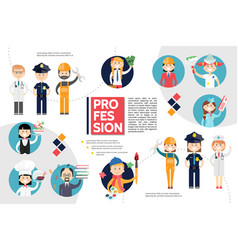Explore The Function Of Seasonal Factors In The Success Of Commercial External Painting And Reveal The Best Times To Protect Long Lasting Results For Your Job
Explore The Function Of Seasonal Factors In The Success Of Commercial External Painting And Reveal The Best Times To Protect Long Lasting Results For Your Job
Blog Article
Uploaded By-Korsholm Celik
When you're planning a commercial external painting task, seasonal factors can make or damage your results. You'll wish to consider just how temperature and humidity impact paint application and drying times. Picking the best period can ensure your paint sticks correctly and lasts longer. But which seasons are absolutely the most effective for this sort of job? Let's check out the crucial elements that can influence your job's success.
The Impact of Temperature Level on Paint Application
When you're intending a commercial outside paint job, the temperature can significantly impact exactly how well the paint sticks and dries.
Ideally, you intend to paint when temperature levels range between 50 ° F and 85 ° F. If it's as well cool, the paint might not treat properly, resulting in concerns like peeling or splitting.
On the other side, if it's as well hot, the paint can dry also rapidly, protecting against proper adhesion and leading to an irregular coating.
You need to additionally think about the time of day; morning or late afternoon offers cooler temperatures, which can be a lot more positive.
Constantly check the manufacturer's recommendations for the certain paint you're using, as they often supply guidance on the optimal temperature level array for optimal results.
Humidity and Its Result on Drying Times
Temperature isn't the only ecological element that influences your commercial outside painting project; humidity plays a considerable role as well. High moisture levels can reduce drying times significantly, impacting the total quality of your paint job.
When the air is filled with dampness, the paint takes longer to cure, which can result in concerns like poor attachment and a greater risk of mold growth. If you're repainting on an especially damp day, be prepared for extensive delay times between layers.
It's crucial to check local weather conditions and strategy as necessary. Ideally, go for moisture degrees in between 40% and 70% for ideal drying out.
Keeping these consider mind ensures your task remains on track and supplies an enduring coating.
Best Seasons for Commercial Exterior Painting Projects
What's the most effective time of year for your industrial external paint tasks?
https://www.architecturaldigest.com/story/painted-ceilings-tips-tricks and very early autumn are typically your best bets. Throughout these periods, temperature levels are light, and moisture levels are commonly lower, creating perfect conditions for paint application and drying.
Stay clear of summertime's intense heat, which can cause paint to dry as well rapidly, causing poor adhesion and coating. In a similar way, winter season's cold temperature levels can hinder correct drying and curing, running the risk of the longevity of your paint task.
Go for days with temperatures in between 50 ° F and 85 ° F for optimal outcomes. Bear in mind to inspect the local weather report for rain, as wet problems can ruin your project.
Planning around https://painter-near-me55443.blogtov.com/15552575/a-fresh-coat-of-paint-on-your-business-structure-can-considerably-improve-its-visual-appeal-and-market-price-what-various-other-unanticipated-advantages-could-this-financial-investment-offer-your-business ensures your paint job runs smoothly and lasts much longer.
Conclusion
In conclusion, intending your industrial external painting jobs around seasonal considerations can make a considerable distinction in the outcome. By organizing work during the ideal temperature levels and humidity degrees, you'll make sure better attachment and drying out times. Bear in mind to keep an eye on regional weather report and choose the correct time of year-- springtime and very early fall are your best choices. Taking these actions will help you accomplish a durable and expert coating that lasts.
